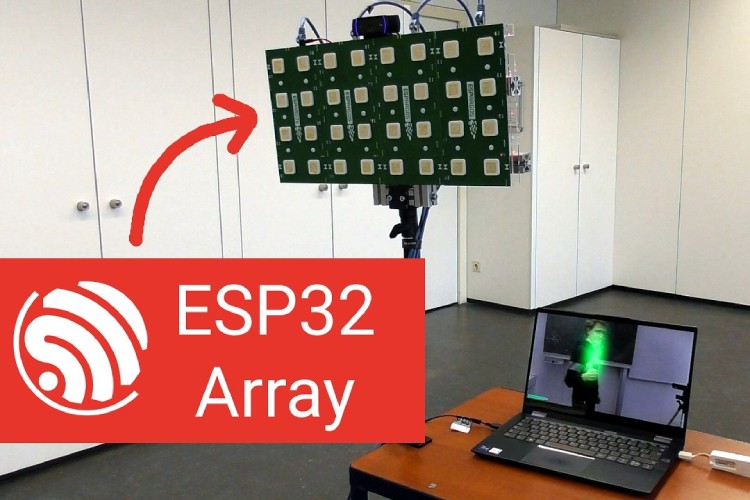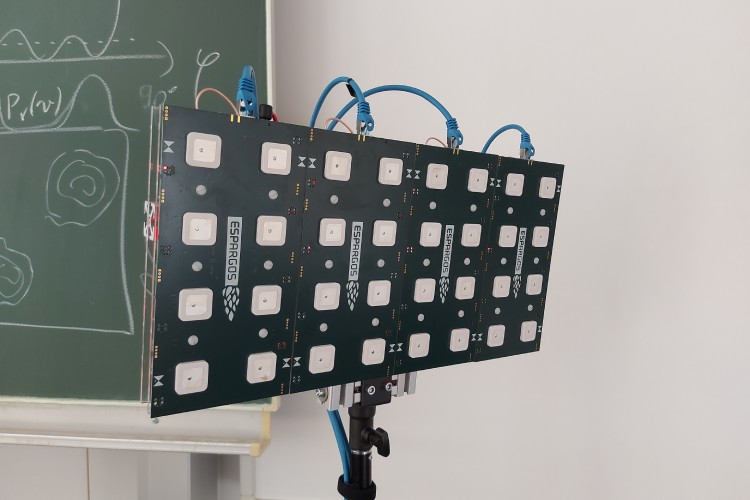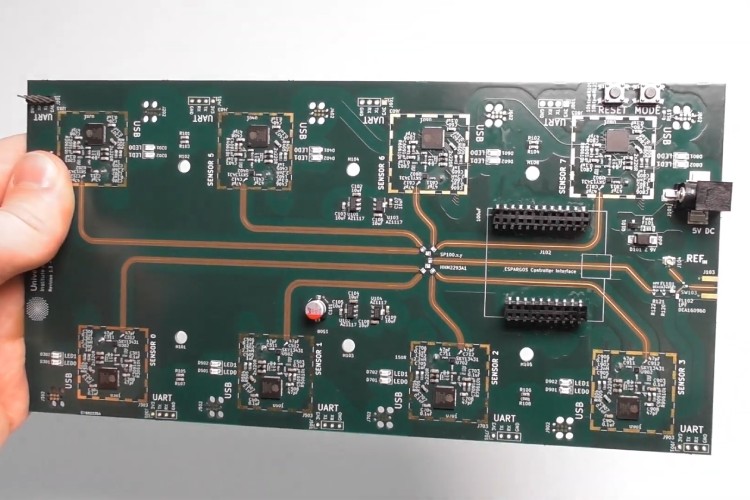
Researchers at the University of Stuttgart’s Institute of Telecommunications have developed ESPARGOS, an advanced phase-coherent ESP32 antenna array that enables real-time WiFi sensing. Unlike traditional wireless systems, ESPARGOS captures Channel State Information (CSI) from 802.11g/n packets, extracting phase and amplitude variations across multiple antennas to generate a spatial representation of WiFi signals. This technology allows users to visualise how radio waves propagate, reflect, and interact with their surroundings—turning invisible wireless transmissions into actionable data. While the hardware and firmware remain closed-source, the accompanying pyespargos library is freely available, offering a user-friendly interface for configuring and streaming CSI data.

At its core, ESPARGOS consists of two primary components: a sensor board, which houses eight ESP32-S2FH4 chips and circularly polarised ceramic patch antennas for signal reception, and a controller board, responsible for synchronising the captured data and streaming it via Ethernet. The system achieves phase coherence by distributing a common reference clock and synchronisation signal across the ESP32 chips, ensuring precise time alignment of received signals. By supporting channel bonding up to 40 MHz, ESPARGOS enhances spatial resolution and depth perception, making it possible to distinguish direct and reflected signal paths with remarkable accuracy. When paired with multiple units, the system scales into a larger, phase-synchronized antenna array capable of more refined wireless imaging and localisation.

A demonstration of ESPARGOS showcased its ability to track WiFi devices in real time, revealing how signals bend, scatter, and reflect off surfaces. A standard smartphone emitting WiFi traffic appeared as a bright green mass in the reconstructed signal map, its movement dynamically captured by the array. Metal surfaces, acting as mirrors for radio waves, created distinct reflection paths, while non-metallic obstacles merely attenuated signals. This capability extends beyond visualisation—ESPARGOS can be used for passive radar applications, detecting movement through walls, mapping indoor environments, and even performing localisation without GPS. Through a combination of Fourier transforms and advanced signal processing, the system extracts precise angle-of-arrival data, offering a novel method for spatial awareness using existing WiFi infrastructure. While the project remains under active development, more details and updates can be found on the ESPARGOS website.

